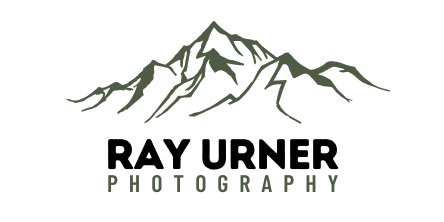Creating a Starburst Effect with the Sun
Half Dome in Yosemite National Park, California
This is seriously one of my favorite things to do out in the field! Capturing a starburst effect can add a magical touch to your photographs, transforming ordinary scenes into captivating images with a dynamic, radiant flair. This guide will walk you through the steps to create a starburst effect with the sun, providing tips and techniques to enhance your photography skills.
And guess what: IT’S EASY!!!
So, what is a Starburst Effect?
Let’s go all scientific for one single sentence: a starburst effect occurs when a point light source, like the sun, is rendered in a photograph with rays emanating from it. This effect can make an image more visually interesting, drawing the viewer's eye to the light source and adding a sense of sparkle and energy. And you can do it with a lot more than just the sun - you can use the moon, street lights, etc.
Essential Equipment
Camera: A DSLR or mirrorless camera with manual settings.
Lens: A lens with a small aperture, ideally between f/14 and f/22.
Tripod: To ensure stability and reduce camera shake.
Lens Hood: To reduce lens flare and improve contrast.
Ready to dive in?
Step-by-Step Guide to Creating a Starburst Effect
1. Choose the Right Time and Location
The best times to capture a starburst effect are during the golden hours, shortly after sunrise or just before sunset, when the sun is low in the sky. I repeat, LOW in the sky! This position helps in creating longer and more pronounced rays. Look for a location where the sun is partially obscured by an object such as a tree, building, or mountain, as this can enhance the starburst effect.
2. Use a Small Aperture
The most critical factor in creating a starburst effect is using a small aperture. Set your camera's aperture to f/14, f/16, or even f/22. The smaller the aperture, the more defined and numerous the rays will be. This works because the small aperture causes diffraction, bending the light into the characteristic starburst pattern. (You know, the fun things that they never taught us in high school physics class)
3. Adjust Your Composition
Compose your shot so that the sun is partially obscured by an object. This partial obstruction helps in controlling the intensity of the light and accentuating the starburst effect. Experiment with different angles and positions until you nail it.
4. Set the Right Exposure
Balancing the exposure is crucial when photographing the sun. Start by setting your camera to aperture priority mode (A or Av, depending on your camera brand) to control the depth of field and ensure the small aperture is maintained. Adjust the ISO to the lowest setting to reduce noise. Depending on the lighting conditions, you might need to use exposure compensation to avoid underexposing or overexposing your shot.
5. Focus Carefully
Manually focus your camera to ensure the scene is sharp. Autofocus might struggle in such bright conditions, so switching to manual focus gives you more control. Focus on an object in the foreground to keep the scene crisp and detailed. Definitely use focus peaking if it is an option on your camera!
6. Use a Tripod
A tripod is essential for stability, especially when using a small aperture that requires a slower shutter speed. This will help you avoid camera shake and ensure your image is sharp. If you’re handholding, you may have to bump your ISO higher than you’d like in order to avoid camera shake.
7. Experiment with Different Lenses
Different lenses can produce varying starburst effects. Wide-angle lenses often create more pronounced starbursts, while prime lenses with a fixed focal length can produce cleaner rays. Experiment with different lenses to see which one gives you the best result.
8. Post-Processing Tips
Enhancing the starburst effect in post-processing can take your image to the next level. Use software like Adobe Lightroom or Photoshop to adjust the contrast, brightness, and sharpness. Be cautious not to overdo it; aim for a natural yet striking look.
Bonus Tips To Help Reduce Annoying Lens Flare
Clean Your Lens: Dust and smudges can (and probably will) cause unwanted flare and reduce the quality of your starburst. No bueno!
Use a Lens Hood: This can help to minimize lens flare and improve the overall contrast of your image.
Happy shooting, friends!!












